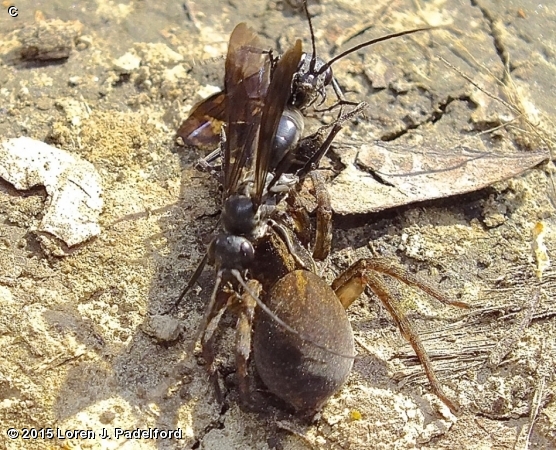
This all black spider wasp is medium sized, about 3/4 inch (18 mm), with long legs. It is shiny black with smoky gray wings. An identifying characteristic is the presence of prominent teeth on the dorsal edge of the hind tibiae (visible in photo A).
This wasp is active from March to June and is most active and likely to be seen in April and May. It is found in forested areas and is a predator of several species of spiders. It is one of the earliest wasps to be active and is probably the first wasp to be encountered in the spring. It is considered common and can normally be found in the eastern U.S. but there are records from Oregon and British Columbia in Canada.
The female wasp digs a burrow in which to lay her eggs prior to hunting for spiders. The entrance to the burrow is usually hidden under dead leaves and can be as long as 15 to 20 inches. There are usually several cells inside the burrow where the female will deposit a paralyzed spider. She lays an egg on the abdomen of the spider. The egg hatches in about two days and the larva matures in about a week, having fed on the paralyzed spider. The larva pupates and remains in the burrow until the following spring.
The content of NatureSearch is provided by dedicated volunteer Naturalists of Fontenelle Forest who strive to provide the most accurate information available. Contributors of the images retain their copyrights. The point of contact for this page is: Loren Padelford.


